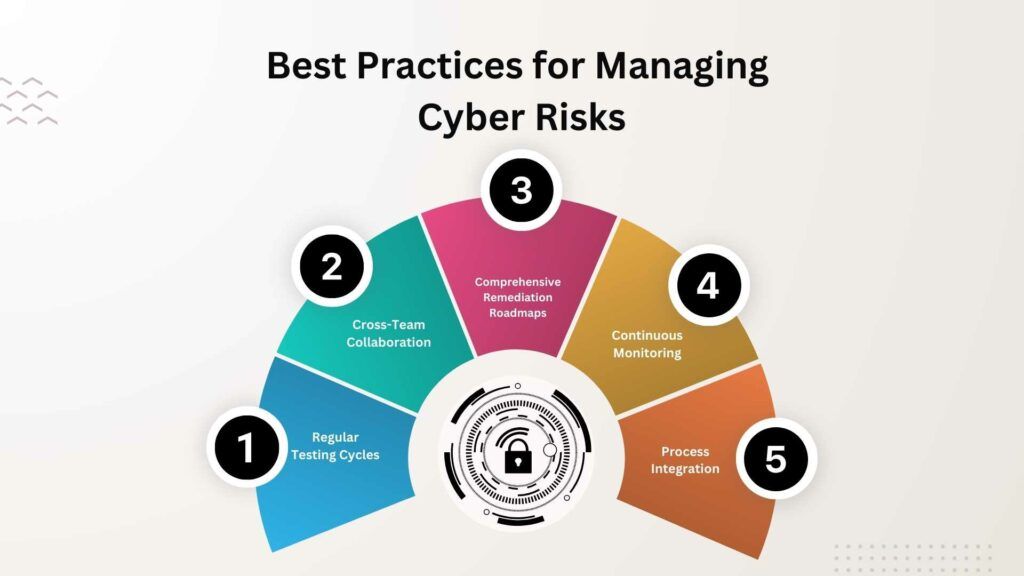Companies constantly battle against cyberattacks, which sneak in through unnoticed weak spots. According to Verizon’s yearly report on data breaches, 74% of these attacks exploit flaws in applications. The organization didn’t know about these vulnerabilities. In 2023, hacking exposed 2 billion stolen records. Affected businesses lost over $30 million each, on average.
Regular vulnerability assessments find security holes that hackers can exploit. Organizations can address them before criminals infiltrate your systems. This blog explains what vulnerability testing evaluates. It also covers key benefits. It explains the optimal frequency and different assessment types to harden cyber defenses.
Table of Contents
What Are Vulnerability Assessments and Why Do They Matter?
Vulnerability assessments provide in-depth inspections of networks, systems, and applications. They aim to spot weak points where hackers might break in. Firewalls form security foundations. However, overlooked gaps like software bugs, cloud misconfigurations, and human errors open backdoors for data breaches or malware. Assessments systematically find these cracks to inform priority patching and policy changes.
Robust evaluations are crucial. Threat actors aggressively utilize any flaws missed by internal teams to circumvent controls. Data is increasingly valuable on the dark web. Companies must regularly assess environments to get ahead of risks. Think of assessments as routine check-ups. They diagnose issues early, before they require substantial repair.
Conducting Effective Vulnerability Evaluations
Comprehensive cyber check-ups involve:
Thoroughly catalog all hardware, software, services, and cloud platforms currently in use across the IT ecosystem.
Risk Identification – Leveraging automated vulnerability scanners and manual reviews by experts to systematically surface security gaps across assessed assets.
Analysis & Prioritization – Detailing discovered vulnerability characteristics and ranking issues by severity levels based on damage potential and timelines for remediation.
Reporting: Reporting findings is compiled into actionable remediation plans. These plans include patching roadmaps and recommendations for policy changes. This informs ongoing security enhancement initiatives.
Specialized tools combine automation for efficiency at scale. They also allow for manual testing to delve into surface-level risks. Detailed output reports further equip internal teams. They can make smart, data-backed decisions to precisely strengthen defenses.
Integrating Testing Methods for Full Coverage
Assessments provide periodic environemnt snapshots. Recurring, hands-on penetration testing is essential. It helps actively get ahead of constantly emerging weaknesses.
Automated scanning can continuously monitor networks, endpoints, and cloud assets for new vulnerabilities. It detects vulnerabilities introduced through deploying fresh software. It also detects vulnerabilities introduced through integrating new hardware or reconfiguring systems. Expert testers simulate real-world attacks. They use techniques like social engineering. They exploit unpatched bugs and abuse improper access privileges. This helps to validate where new gaps have emerged.
Combining these methods provides full coverage for comprehensive monitoring. It also covers change management programs and IT modernization initiatives. Ongoing testing integrates with and informs continuous enhancement of infosec strategies.
Following Best Practices for Managing Cyber Risks

Effectively managing vulnerabilities requires:
Regular Testing Cycles: Testing cycles happen quarterly or monthly. They adapt to the changing speed of hardware, software, services, and workflows.
Cross-Team Collaboration – Executive leadership sets priorities. IT/Ops executes improvements. Security experts perform evaluations and training.
Comprehensive Remediation Roadmaps are short and long term initiatives. They are informed by risk levels based on damage potential, exploit likelihood, and remediation timelines.
Continuous Monitoring: Leverage platforms like security information and event management (SIEM) solutions for real-time insight. This is between periodic tests.
Process Integration makes recurring assessments part of everyday business activities. This is instead of one-off compliance checkbox exercises.
Assessments Drive Measurable Security Improvements
An international electronics brand underwent intensive automated scanning and manual penetration testing. The testing uncovered 6,000+ vulnerabilities. They systematically fixed the problem, reducing risks by 96% in 15 months. This greatly improved protection.
Global non-profit ChildFund sees 80,000+ daily cyberattack attempts. Rigorous testing contained an initial breach attempt. It identified unvalidated schema vulnerabilities for rapid patching. This saved over $700K in forensic investigation and recovery costs.
These examples clearly showcase how organizations advance security posture. They do this through recurring assessments that identify and then fix gaps.
Conclusion
Environments are growing more complex and threats keep changing. One-time reviews don’t give lasting protection. Expansive attack surfaces demand flexible, intelligence-led security models.
Comprehensive, recurring assessments diagnose issues early for fixing before turning into breaches. Evaluations also inform strategic decisions. They do this by quantifying coverage gaps, unsafe practices, and patch levels. Business leaders can align security initiatives to risks informed by hard data.
Integrating routine automated and manual testing meets compliance mandates. It also lowers insurance rates and proves security hygiene to customers.
As technology and workforces morph, make assessments the foundation for understanding exposures. Combining automation and human testing creates responsible scaling. Now is the time to invest in robust vulnerability management programs. Your organization’s protection depends on it.
FAQs
For most companies, every 1-3 months allows adapting to change. At minimum annually with ongoing scanning. Highly regulated industries like finance and healthcare warrant testing every 1-2 weeks.
Leaders like Tenable, Rapid7, and Outpost24 blend customizable automation with expert manual testing. Evaluate capabilities against coverage needs across diverse environments.
Remediation roadmaps are organized by risk levels. The levels are based on damage potential. They also consider ease of exploit and timelines for patching or policy changes. Balance short and long term fixes.

